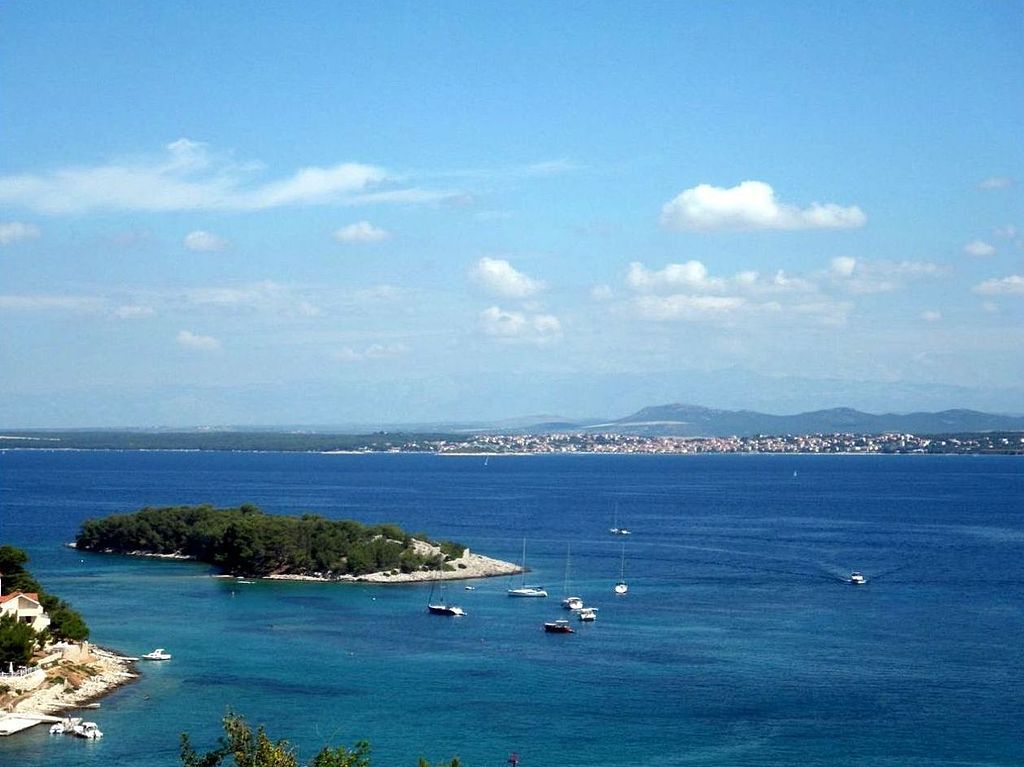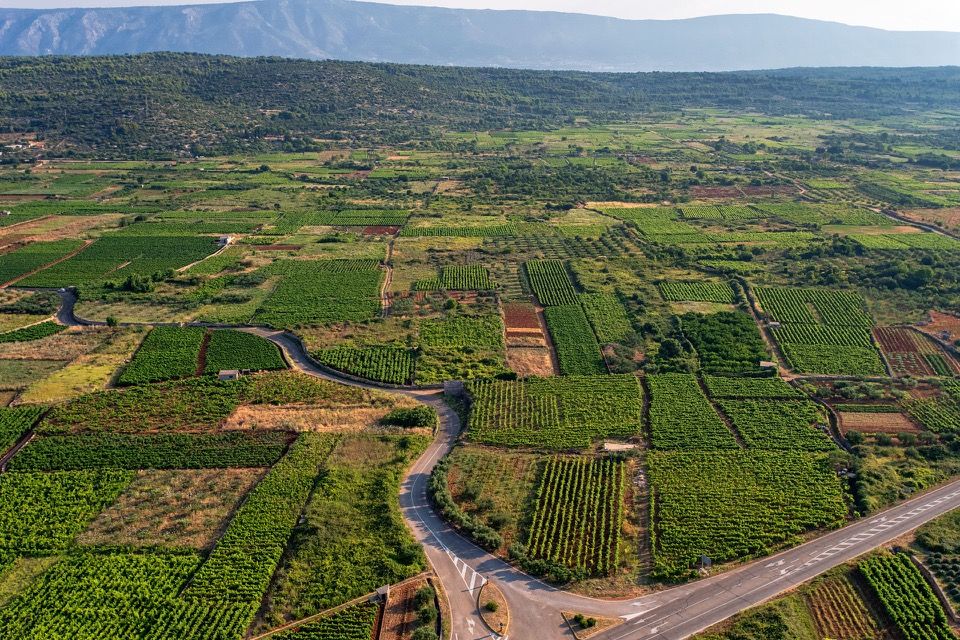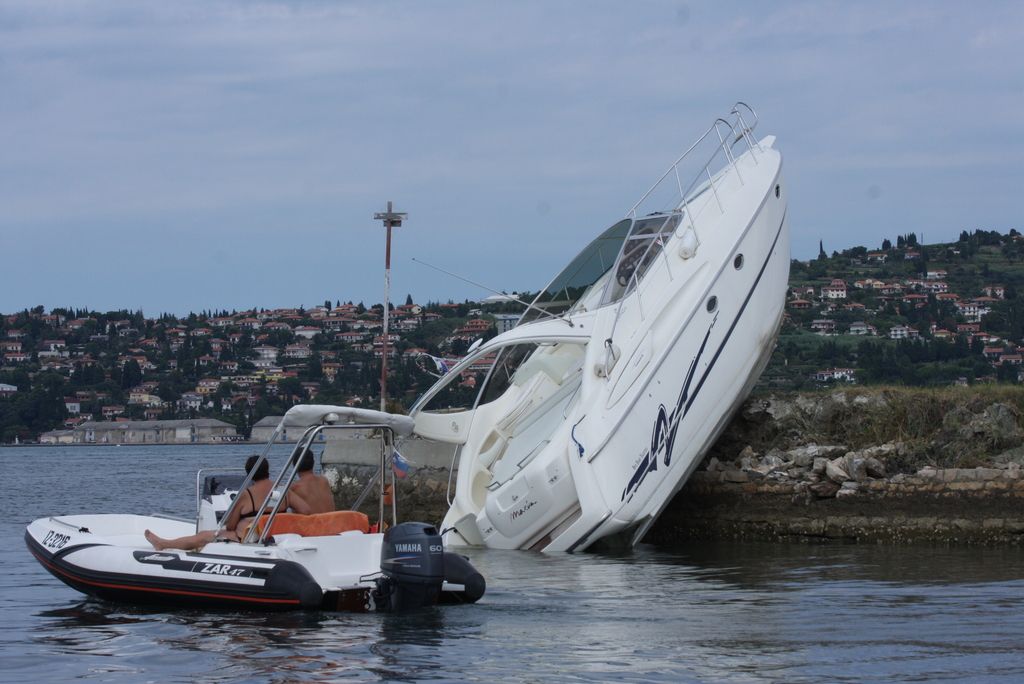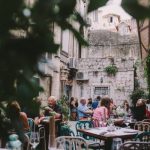A is for… Adriatic. Okay, it is a bit obvious, but it’s one of the pillars of Croatian tourism and the country’s international image, as well as a good part of what we do. Every word we write about the coast, every piece of news we publish, every little gorgeous seaside place we try to draw your attention to… that’s the Adriatic.
The stunning coastline is a 1777 kilometre span from Pula to Dubrovnik – to be more precise, from Savudrija to Prevlaka. Croatia, the country of a thousand islands, actually has 1244. Picking favourite cities, villages, bays and beaches is a mission impossible, most of them being so idyllic they all get dubbed pearls and gems in international headlines. Ancient and medieval towns enveloped in fortification walls almost intact, golden sand that slips through your fingers like silky hair, water in shades of blue we still haven’t coined a name for… If one were to make an alphabet of all things worth mentioning on the Croatian coast, first and foremost, A stands for Adriatic.
This could be fun. Let’s see what else we can come up with.
ACI

The Adriatic Croatia International Club, or ACI for short, is the largest company operating a marina chain on the Croatian coast. They manage 22 marinas, from Umag in northwestern Istria all the way south to Dubrovnik. The company was founded in 1983 and was first named Adriatic Club Yugoslavia Brijuni; ACY became ACI in 1994 when they underwent privatisation and changed the name into the one we know today. In 2016, ACI opened their 22nd marina, the first one to get built after 24 years: ACI marina in Slano is named after the founder of the company, Veljko Barbieri, who launched a sailing program and a sailing school as part of ACI back in 1988. You can find a list of marinas on Total Croatia Sailing and learn more about the history of ACI here. Oh, one more thing: the ACI crew in Slano has a knack for social media – follow their Facebook page for some stunning pics and endearing posts.
Apoxyomenos
If a more famous ancient lad exists somewhere on the Croatian Adriatic, we have yet to hear about him. The Greek bronze sculpture of an athlete was found by a diver in the waters near Lošinj island and raised from the sea in 1999. After extensive restoration works, the athlete was first displayed in public in 2006 in Zagreb while he waited for the new museum building project to be completed in his hometown of Lošinj. An amazing project of architects Turato and Rendić, the museum is hidden inside an old palace on the waterfront; it doesn’t look like a spectacle on the surface, but will blow you away once you walk through the door. Apoxyomenos and his home are a must-see for anyone travelling around Kvarner – read more about the museum and take a look at the mindblowing interior in this article.
Agave lace

There are three places in Croatia known for incredible lacework created by local women: Pag, Lepoglava and Hvar. Each is famous for its distinct style, but the lace on Hvar boasts a very special feature: it’s the only one that’s made using thread produced of agave leaves. The tradition dates back to the 17th century when two Benedictine nuns arrived to Hvar and founded a monastery; in 1836, they were asked by the Hvar Commune to establish a girls’ school. The nuns passed on their lace-making skills down for generations, and the nunnery remains the only place on the island where the skill is taught today. The fascinating process that turns nature into art begins with the agave leaves getting processed into a soft, thin thread that’s used to make lace. Legend has it the patterns originate from Canary islands thanks to a seafarer who brought back a piece of Tenerife lace; three distinctive types of lacework on Hvar are still called tenerifa, tenerifa with netting and filet embroidering. The Hvar lace is a part of UNESCO Intangible World Heritage list. Another name for agave lace is aloe lace, making this amazing craft a double A-item on our list.
Artina island

Those 1244 islands mentioned above actually include 78 islands, 524 islets and 642 reefs and cliffs. If you’re sailing around the Adriatic and you’re the type who likes adventure, the islet group might be the most interesting one – the islets are uninhabited, most of them without any infrastructure, and you’re sure to find perfect, untouched little beaches. The islet of Artina sits close to the bigger Vrgada island, located between Pašman and Murter, across from Pakoštane town. How about an afternoon of exploring?
Arena

Another double A! The amphitheatre in Pula, widely known as Arena, is one of the best preserved and most famous ancient Roman monuments on Croatian soil. It was built between 27 BC and 68 AD, when Pula became a regional centre of Roman rule; the construction took place during the reign of emperors Augustus, Vespasian and Titus. It’s one of six largest surviving Roman amphitheatres in the world, and the only one with all three classical architectural orders still preserved. On first glance, it looks almost intact, a beautiful ring standing proud at the entrance to the city centre. The arena was built for gladiator fights; it housed medieval fairs and knight tournaments in the Middle ages, and is used as a venue for concerts and film screenings today.
A capella
If you take a walk along the promenade or through the streets of any coastal town, there’s a good chance you’ll bump into a klapa performance. Klapa, a word that translates to ‘a group of friends’, stands for traditional a cappella singing in Dalmatia (plus Kvarner and Istria, but Dalmatia takes the lead). The number of klapa members usually varies from four to a dozen, but the group always includes two tenors, a baritone, and a bass. There are male and female klapa groups; as a rule they don’t mix, but you’ll sometimes come across a group of good-spirited singers, both men and women, who’ll come together to unofficially perform for the audience. After all, the point of music is to bring people closer, and there’s nothing more magical than strolling around Diocletian’s palace, turning a corner and getting to witness an incredible vocal performance of a klapa.
Ager

Did you know Hvar island boasts no less than 8 UNESCO protected sites? One of them is the Stari Grad Plain, also known as Ager or Hora; the parcel covering 80 hectares and dating back 2400 years is often described as the largest and the most productive field on the Croatian coast. A quick history lesson: in 384 BC, when the Greeks established a settlement that later grew to become the Stari Grad we know today, they started cultivating the land and introduced crops such as grapes and olives that survived to this day. The field is preserved in its original form, and was inscribed in the UNESCO World Heritage list in 2008. It’s a fascinating site, much different from the typical UNESCO material – historic centres, castles, churches; the plain is a monument to the eternal power of nature and a testament to hard-working people of Hvar throughout history. You can find out more about Stari Grad Plain in this article.
Argonauts
You probably know the legend about the ancient crew from Thessaly that was sent to Colchis to obtain the rune of a golden oxen for king Pelias. Led by Jason, the argonauts sailed across the foreign seas, reached Mount Argo and stole the golden rune, helped by the king’s daughter Medea. Once the rune was discovered missing, the Colchids pursued the argonauts to retrieve the stolen property, led by Medea’s brother Absyrtus. What does that have to do with the Croatian Adriatic? Well, the argonauts reached the waters of Kvarner and a battle broke out on the islands of Cres and Lošinj. Abysrtus was killed in battle; the Colchids decided to stay in Istria and founded the city of Pula. Only a legend, but such an appealing one! Cres and Lošinj are sometimes referred to as Apsirtidi in honour of late Absyrtus.
Accidents

Unfortunately, sailing in Croatia isn’t always just about the islands, UNESCO sites and cool myths. The other side of the coin implies, uh, not exactly making the best memories. The summer season was ceremonially opened in Dramalj near Crikvenica where a speedboat crashed into a tourist boat first, then sprinted towards the beach and injured two people in the process. Jet-ski incidents and speedboats coming dangerously close to the shore are a regular sight. Just last week, a boat with four Dutch citizens crashed into a shore of Žavinac Mali island; three people were injured, including a small child that ended up with serious injuries. We don’t report on every single accident because we don’t want to brand the Croatian coast as a deathtrap, but every now and then, attention should be drawn to the fact that most incidents and injuries happen because people were reckless. So far, we haven’t heard a lot about engine failures or technical mishaps; the grave events usually come down to cocky individuals who want to show off. Or, y’know, they just don’t know their way around a boat. Stay smart, be careful, and always put safety first!
Amateurs
In some cases, when there are no people hurt and the environment stays intact, accidents can be watered down to a level that will have you feeling bad about laughing, but you’ll laugh nonetheless. Meet amateur sailors who forgot to read the manual first – or check the maps, or listen to advice of the more experienced men of the sea. Masts fall victim to bridges, engines have hiccups and twirl the boats around. In rare cases, even cars get sacrificed to Harbour Gods, like this BMW that slipped into the sea for some deep cleaning.
That’s it for A! Next week: B is for…. Can you guess? Let us know in the comments!
Photo credit: Hvar lace – Ivo Biočina, Croatian National Tourist Board, ACI – Yacht Rent









